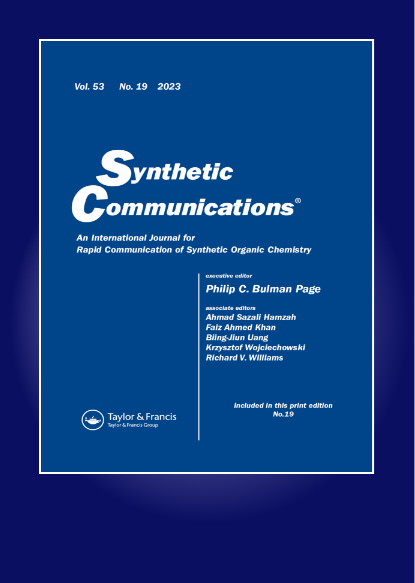喹啉/异喹啉合成创新方法综述:揭开 Pummerer 反应策略的神秘面纱
IF 1.8
3区 化学
Q3 CHEMISTRY, ORGANIC
引用次数: 0
摘要
普默尔重排反应被广泛用于制备各种杂环化合物,以及在有机分子中引入羰基、羟基和氨基等官能团。反应机理通常是路易斯酸或其他亲电体对亚砜的硫原子进行最初的亲电攻击,从而形成锍中间体。该中间体随后发生重排,导致烷基/芳基从硫迁移到邻近的碳原子上,同时释放出一个离去基团。喹啉衍生物的普默尔重排具有重要的合成用途,已被用于合成各种化合物。它在天然产品、农用化学品、药品、多样性合成、官能团转化和其他精细化学品的合成中都有应用。总之,喹啉衍生物的普默尔重排为药物化学中复杂分子的合成提供了一种多功能工具。本文章由计算机程序翻译,如有差异,请以英文原文为准。
A review on innovative approaches in quinoline/isoquinoline synthesis: Unveiling the Pummerer reaction strategy
The Pummerer rearrangement is extensively utilized for the preparation of various heterocyclic compounds, as well as for the introduction of functional groups such as carbonyl, hydroxyl, and amino groups into organic molecules. The reaction mechanism typically proceeds through an initial electrophilic attack by Lewis acid or another electrophile on the sulfur atom of the sulfoxide, leading to the formation of a sulfonium intermediate. Subsequent rearrangement of this intermediate results in the migration of an alkyl/aryl group from sulfur to a neighboring carbon atom, accompanied by the expulsion of a leaving group. The Pummerer rearrangement of quinoline derivatives has significant synthetic utility and has been employed in the synthesis of various compounds. It has found applications in the synthesis of natural products, agrochemicals, pharmaceuticals, diversity-oriented synthesis, functional group transformations, and other fine chemicals. Overall, The Pummerer rearrangement of quinoline derivatives offers a versatile tool for the synthesis of complex molecules in medicinal chemistry.
求助全文
通过发布文献求助,成功后即可免费获取论文全文。
去求助
来源期刊

Synthetic Communications
化学-有机化学
CiteScore
4.40
自引率
4.80%
发文量
156
审稿时长
4.3 months
期刊介绍:
Synthetic Communications presents communications describing new methods, reagents, and other synthetic work pertaining to organic chemistry with sufficient experimental detail to permit reported reactions to be repeated by a chemist reasonably skilled in the art. In addition, the Journal features short, focused review articles discussing topics within its remit of synthetic organic chemistry.
 求助内容:
求助内容: 应助结果提醒方式:
应助结果提醒方式:


